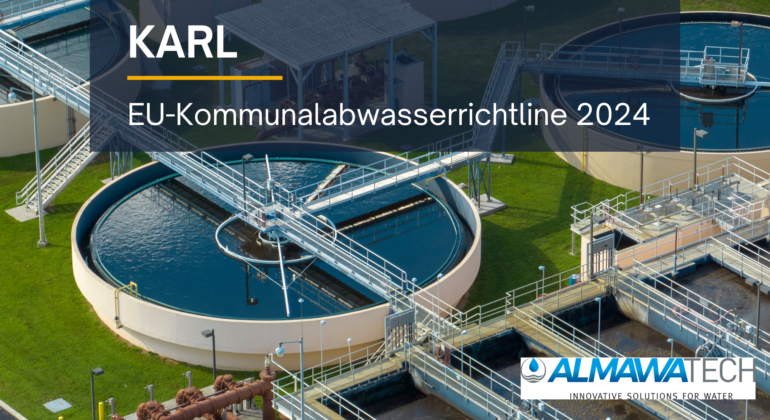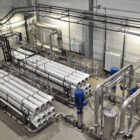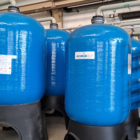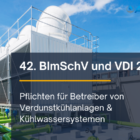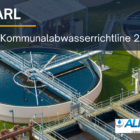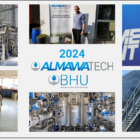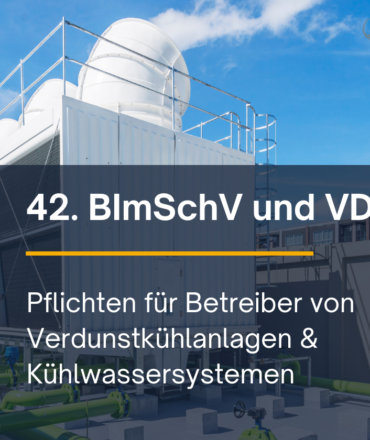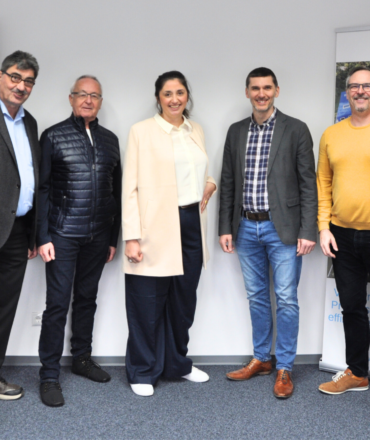The revision of the EU Urban Waste Water Directive (UWWD) marks a decisive turning point in water protection. With the aim of further reducing the environmental impact of wastewater, the directive brings significant changes for municipal and industrial players. This new regulation now faces the challenge of being transposed into national law within 30 months. The ambitious timetable requires rapid development of strategies and adjustments, both at political level and in practice.
Table of contents
Main points of the new Urban Waste Water Directive
The new version of the EU Urban Waste Water Directive, which was adopted on December 12, 2024, pursues several goals, including further improving wastewater treatment and using resources more efficiently.
Member States have 30 months to transpose the directive into national law. Before the new directive can be adopted and published in the EU Official Journal, the Council and Parliament still have to formally adopt the political agreement. It must then be transposed into national law within two and a half years.
The most important new features include:
1. stricter limits for nutrients
The new emission limits for nitrogen and phosphorus are aimed at curbing eutrophication - the excessive supply of nutrients in water bodies. This source of pollution causes massive algae growth, which results in oxygen deficiency and habitat loss in aquatic ecosystems.
What is changing?
Stricter limit values apply to wastewater treatment plants with a capacity of over 100,000 population equivalents (PE). The requirements will be introduced in stages:
- By 2033: 30% of installations must comply with the new limits.
- By 2036: 70 % of systems must be converted.
- By 2039: Complete implementation for all affected plants.
Impact:
Operators must invest in new technologies such as optimized denitrification, phosphorus recovery and advanced filtration processes. These measures improve water quality in the long term, but represent a financial challenge.
2. expansion of the fourth purification stage
The mandatory introduction of the fourth treatment stage is a milestone in wastewater treatment. The aim is to remove micropollutants such as pharmaceutical residues, pesticides or microplastics, which are not fully captured by the conventional biological or chemical treatment stages.
What is changing?
The directive requires wastewater treatment plants with a capacity of 150,000 PE or more to gradually introduce the fourth treatment stage:
- By 2033: 20 % of installations must be equipped.
- By 2039: 60 % of the systems.
- By 2045: Complete coverage.
In addition, polluter-pays principles are to take effect, in which companies that put micropollutants into circulation contribute financially to implementation.
Technological requirements:
- Activated carbon filtration: adsorption of organic pollutants.
- Ozonation: Oxidation of poorly degradable compounds.
- Membrane process: From the finest filtration to reverse osmosis.
Impact:
Water quality is significantly improved, particularly for sensitive ecosystems and drinking water protection. At the same time, considerable investment costs are incurred, which are partially cushioned by manufacturer responsibility.
3. mandatory monitoring of pathogens
Wastewater monitoring is being expanded in order to detect pathogens such as viruses (e.g. SARS-CoV-2), bacteria (e.g. salmonella) or parasites at an early stage. This supports both public health monitoring and pandemic prevention.
What is changing?
Wastewater treatment plants must regularly take samples and analyze them for relevant pathogens. The focus here is on technologies such as:
- PCR analyses: Precise identification of genetic traces of pathogens.
- Rapid tests: For the detection of acute health risks.
Flexibility for Member States:
The Directive allows Member States to implement the Directive according to their national priorities.
Impact:
Operators must expand laboratory capacities and provide trained staff. This increases the technical effort, but strengthens health protection and can serve as an early warning system for future pandemics.
4. energy efficiency and climate neutrality
The wastewater industry is energy-intensive. The directive therefore provides for a gradual increase in energy efficiency and the transition to climate-neutral processes by 2045.
What is changing?
The requirements include the following interim goals:
- By 2030: 20 % energy neutrality.
- By 2035: 40 %.
- By 2040: 70 %.
- By 2045: 100% climate neutrality.
Technological approaches:
- Energy generation from sewage sludge: Anaerobic digestion and biogas production.
- Use of renewable energies: photovoltaics or heat recovery from waste water.
- Optimization of existing processes: Energy-efficient ventilation systems and pump technologies.
Impact:
In the long term, these measures reduce operating costs and make a significant contribution to climate protection. In the short term, however, they require considerable investment and changes to the system infrastructure.
Impact on industry and industrial wastewater treatment plants
The new directive has far-reaching consequences for industrial companies that act either as indirect dischargers via the municipal sewer network or as large direct dischargers of wastewater.
1. indirect dischargers (industrial companies)
Stricter pre-treatment requirements
Compliance with the stricter limits for nitrogen and phosphorus requires the use of innovative technologies that ensure a reduction in pollutants even before they are discharged into the municipal network.
- Chemical precipitation:
A process that effectively removes phosphorus from wastewater by adding precipitants such as iron or aluminum salts. This method is particularly suitable for industries with high phosphorus concentrations, e.g. the food and chemical industries. - Membrane processes:
Pressure-driven processes such as microfiltration and ultrafiltration offer precise separation of pollutants and particles. Membrane systems enable very fine cleaning and ensure that the limit values are adhered to. - Advanced Oxidation Processes (AOP):
Technologies such as ozonation or UV hydroxyl radical formation are used to effectively oxidize organic pollutants and increase their biodegradability.
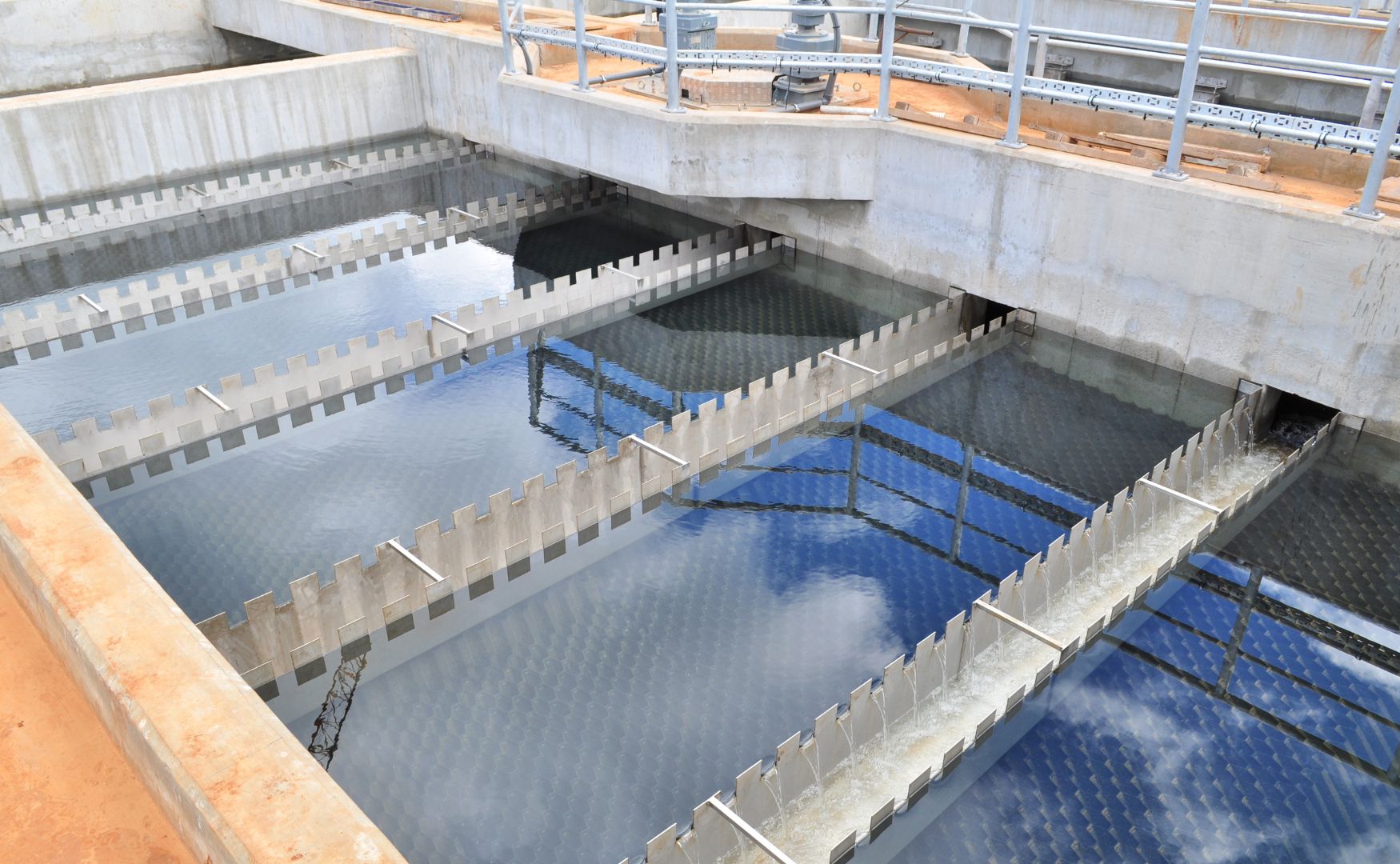
Photo: Our ALMA BHU LHPS precipitation and flocculation system for phosphate elimination
Increased wastewater charges
Industrial companies must be prepared for the fact that the investment costs for the expansion of municipal wastewater treatment plants to include a fourth treatment stage will be covered proportionately by increased charges. This particularly affects companies with a high volume of wastewater. In order to minimize costs, in-house solutions such as internal pre-treatment systems may be an option.
Monitoring and reporting obligations
The new obligations include detailed analyses and reports on wastewater discharges:
- Trace substances:
Companies must prove the extent to which pollutants such as pharmaceutical residues, pesticides or microplastics enter the municipal network. - Pathogens:
Regular microbiological monitoring and reporting are required to minimize health risks.
2. operators of industrial wastewater treatment plants and large direct dischargers
Investments in new technologies
Large direct dischargers must carry out extensive modernization of their wastewater treatment plants:
- Fourth purification stage:
The use of this purification stage is essential in order to remove micropollutants. Technologies such as activated carbon filtration or advanced oxidation processes (e.g. ozonation) are key components here. - Advanced biological processes:
These processes improve the degradation rates of organic pollutants and significantly reduce residual pollution.
Sustainability requirements
The EU directive requires the integration of energy-efficient and climate-neutral processes:
- Biogas plants:
The anaerobic treatment of sewage sludge produces biogas that can be used for own consumption. This reduces energy consumption and lowers CO₂ emissions at the same time. - Renewable energies:
The use of photovoltaic systems or heat recovery systems from wastewater is an important element in achieving climate targets.
Long-term planning
Industrial companies must strategically adapt their wastewater treatment plants in order to meet future requirements:
- Digitalization and automation:
Smart control systems and sensors enable optimized monitoring and control of wastewater treatment. - Flexibility through scalable technologies:
Modular system concepts enable adaptation to increasing requirements without fundamental new investments.
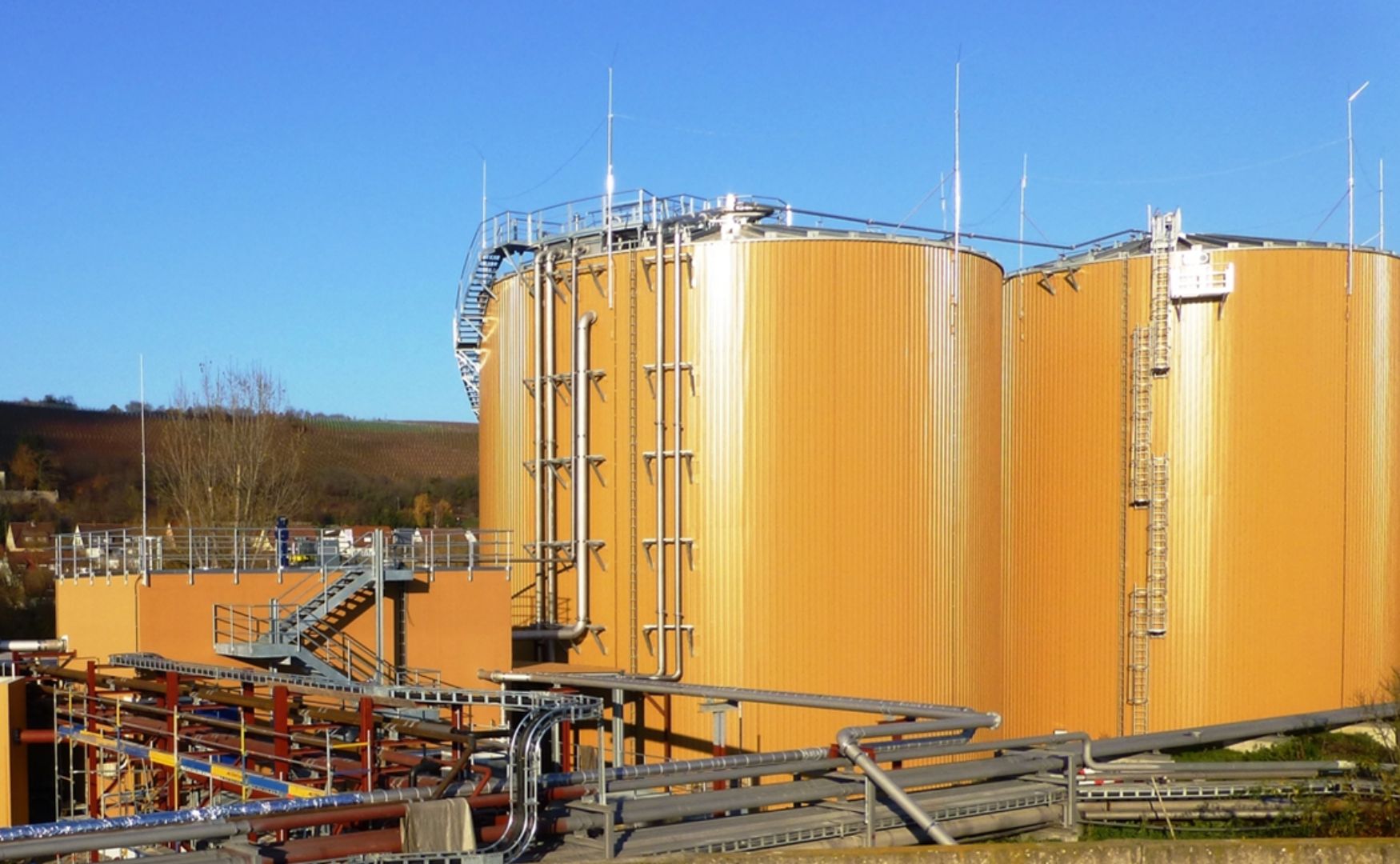
Photo: Our ALMA BHU GMR biogas plant
Criticism of the new directive
The new version of the Urban Waste Water Directive has met with mixed reactions. While the objectives are widely supported, the implementation requirements are the subject of controversial debate. The German Association for Water, Wastewater and Waste (DWA) is calling for realistic and practical planning.
Dr. Lisa Broß, spokesperson for the DWA Federal Executive Board, emphasizes:
"What is important now is a pragmatic national implementation with a sense of proportion. The industry needs planning and legal certainty. National tightening must be avoided at all costs, and Germany's special approach to monitoring discharge values for phosphorus and nitrogen must be ended."
To the full DWA press release: Read article
Criticism of the new Urban Waste Water Directive focuses primarily on the practical challenges associated with its implementation. The main concerns relate to both financial and technical aspects as well as the ambitious climate neutrality targets. The following points illustrate the main challenges in detail:
High investment costs
The implementation of the directive is estimated to cost up to 230 billion euros across Europe. In Germany alone, it is expected to cost tens of billions. These investments concern both the expansion of existing wastewater treatment plants and the introduction of new technologies such as the fourth treatment stage.
Burden for small and medium-sized enterprises (SMEs)
Small and medium-sized enterprises (SMEs) face considerable challenges. They have to modernize or adapt their wastewater treatment systems, which is a financial burden that many companies find difficult to bear without support.
Technical challenges
The introduction of modern technologies, such as the fourth treatment stage, raises questions of scalability, feasibility and efficiency, especially for small wastewater treatment plants. Technical innovations and adapted solutions are required here.
Energy targets as a challenge
The demand for climate neutrality by 2045 is ambitious, but places high demands on the industry. Without sufficient funding, these targets may be difficult to achieve, especially for smaller operators.
Open questions and future challenges
Funding and promotion
The question of sufficient funding programs at EU and national level is central. Without clear funding options, many municipalities and companies will not be able to implement the requirements.
Technological implementation
The standardization of the fourth purification stage and other measures remains a critical point. Uniform standards must be created across Europe to simplify implementation.
Monitoring and reporting
The requirements for monitoring pathogens and trace substances place high technical and organizational demands. There is an urgent need to clarify the practical implementation and reporting requirements.
Effects on competition and the economy
The financial burdens could put European companies at a disadvantage in international competition. At the same time, the directive offers potential for innovation and new markets in the field of water technologies.
Conclusion
The new EU Urban Waste Water Directive brings with it significant changes that are intended to improve water protection in the long term. At the same time, the strict requirements pose major challenges for both local authorities and industry. Early planning, investment in innovative technologies and close cooperation between politics, industry and science are crucial to successfully implementing the objectives of the directive.


